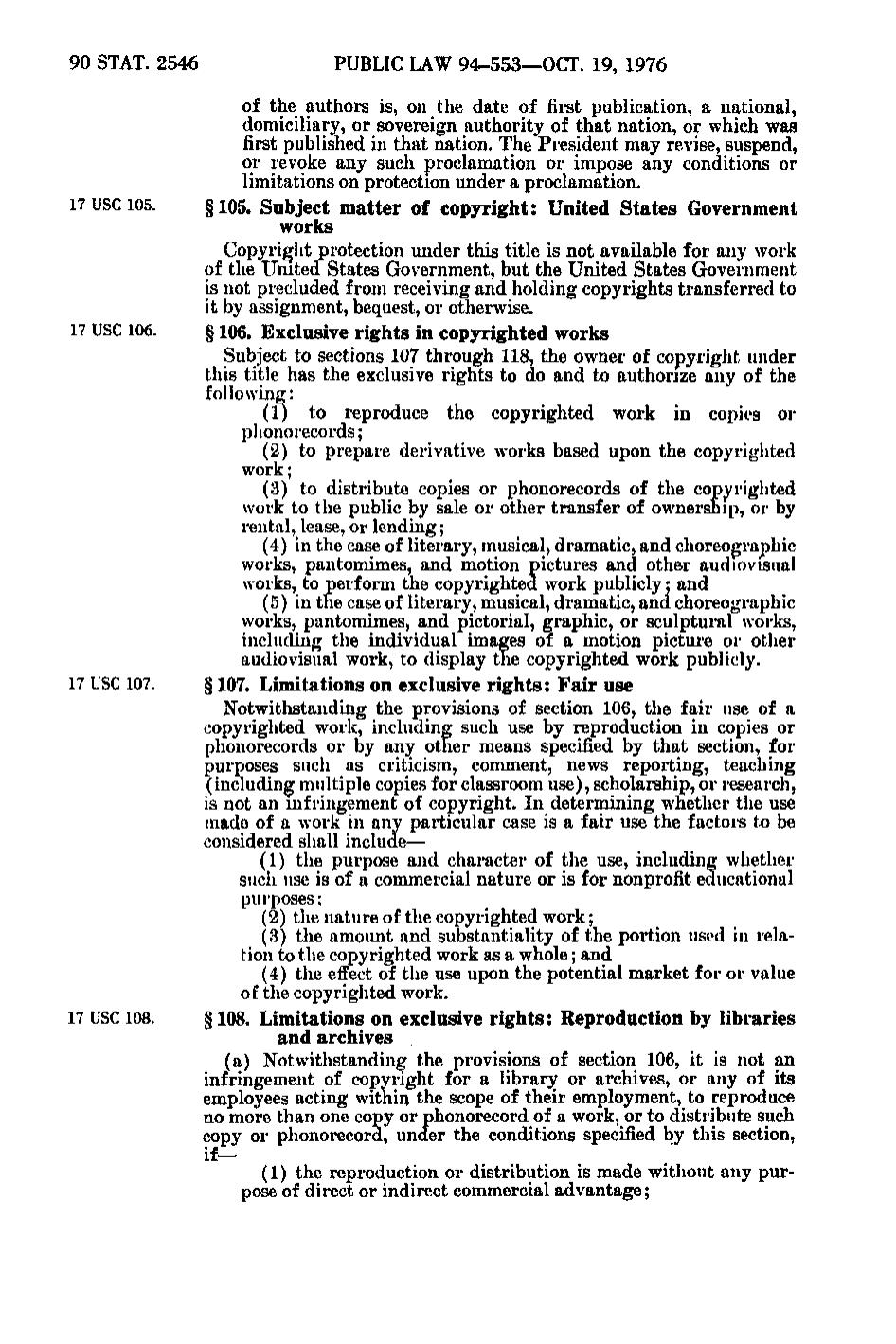90 STAT. 2546
17 USC 105.
17 USC 106.
17 USC 107.
17 USC 108.
PUBLIC LAW 94-553—OCT. 19, 1976 of the authors is, on the date of first publication, a national, domiciliary, or sovereign authority of that nation, or which was first published in that nation. The President may revise, suspend, or revoke any such proclamation or impose any conditions or limitations on protection under a proclamation. §105. Subject matter of copyright: United States Government works Copyright protection under this title is not available for any work of the United States Government, but the United States Government is not precluded from receiving and holding copyrights transferred to it by assignment, bequest, or otherwise. § 106. Exclusive rights in copyrighted works Subject to sections 107 through 118, the owner of copyriglit under this title has the exclusive rights to do and to authorize any of the following: (1) to reproduce the copyrighted work in copies or phonorecords; (2) to prepare derivative works based upon the copyrighted work; (3) to distribute copies or phonorecords of the copyrighted work to the public by sale or other transfer of ownership, or by rental, lease, or lending; (4) in the case of literary, musical, dramatic, and choreographic works, pantomimes, and motion pictures and other audiovisual works, to perform the copyrighted work publicly; and (5) in the case of literary, musical, dramatic, and choreographic works, pantomimes, and pictorial, graphic, or sculptural works, including the individual images of a motion picture or other audiovisual work, to display the copyrighted work publicly. § 107. Limitations on exclusive rights: Fair use Notwithstanding the provisions of section 106, the fair use of a copyrighted work, including such use by reproduction in copies or phonorecords or by any other means specified by that section, for purposes such as criticism, comment, news reporting, teaching (including multiple copies for classroom use), scholarship, or research, is not an infringement of copyright. In determining whether the use made of a work in any particular case is a fair use the factors to be considered shall include— (1) the purpose and character of the use, including whether such use is of a commercial nature or is for nonprofit educational purposes; (2) the nature of the copyrighted work; (3) the amount and substantiality of the portion used in relation to the copyrighted work as a whole; and (4) the effect of the use upon the potential market for or value o f the copyrighted work. § 108. Limitations on exclusive rights: Reproduction by libraries and archives (a) Notwithstanding the provisions of section 106, it is not an infringement of copyright for a library or archives, or any of its employees acting within the scope of their employment, to reproduce no more than one copy or phonorecord of a work, or to distribute such copy or phonorecord, under the conditions specified by this section, if— (1) the reproduction or distribution is made without any purpose of direct or indirect commercial advantage;
�
